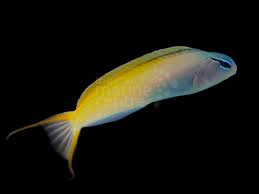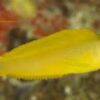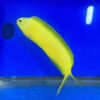The Dragon in Traditional and Modern Chinese Craft Arts

The dragon is an enduring and powerful symbol in Chinese culture, often representing strength, wisdom, protection, and good fortune. For thousands of years, this mythical creature has been an integral part of Chinese art, from ancient pottery and textiles to modern ceramics and graphic design. In both traditional and contemporary craft arts, the dragon has been a key motif, weaving together elements of history, myth, and creativity. This article explores the dragon’s significance in Chinese craft arts, examining its role in both traditional and modern contexts, and how its representation has evolved over time.
The Significance of the Dragon in Chinese Culture
In Chinese culture, the dragon is much more than just a mythical creature. It is a symbol of the emperor, power, and divine protection. The dragon is often associated with water, weather, and the elements, reflecting its role in controlling the natural world. It is also seen as a creature of benevolence and auspiciousness, bringing good fortune and prosperity. The image of the dragon is versatile, and over the centuries, it has been adapted to suit various forms of artistic expression.
The dragon’s powerful symbolism extends beyond the literal creature. Its image has been employed to signify protection, especially in the context of Chinese architecture, amulets, and ceremonial objects. The symbolism of the dragon continues to thrive in modern-day China, making its way into everyday life and the artistic realm, where it remains a symbol of national identity and cultural pride.
Dragons in Traditional Chinese Craft Arts
Traditional Chinese craft arts are deeply tied to centuries of history and heritage. The dragon has played a central role in many forms of traditional art, particularly in textiles, ceramics, woodwork, and jade carving. These crafts were created not only for aesthetic value but also for symbolic purposes, as the dragon was seen as an embodiment of divine power and protection.
1. Traditional Chinese Ceramics and Pottery
Chinese ceramics have a long history, dating back thousands of years, and the dragon has frequently appeared in pottery and porcelain. From the Tang Dynasty (618–907) to the Qing Dynasty (1644–1912), dragon motifs were commonly used on imperial porcelain and pottery, signifying the emperor’s divine right to rule.
In the imperial court, porcelain wares featuring dragons were often reserved for ceremonial purposes. The most famous example is the imperial blue-and-white porcelain, where intricate dragon designs were painted onto the ceramic pieces. These dragons, often depicted in mid-flight or coiling around objects like clouds or pearls, symbolized strength, authority, and divine favor. The most famous form of porcelain dragon work is the longquan celadon, produced during the Song Dynasty (960–1279), which featured elegant and finely detailed dragon imagery.
Additionally, during the Qing Dynasty, the imperial dragon became more stylized and represented the power and wealth of the emperor. The “five-clawed dragon” was a hallmark of imperial China, as it was reserved exclusively for the emperor’s use. These dragons were meticulously crafted and often featured on items such as vases, bowls, and other ornamental objects that displayed the emperor’s imperial status.
2. Traditional Chinese Textiles
In Chinese textiles, the dragon has also held great significance, especially in the making of silk embroideries, tapestries, and clothing. The dragon was commonly embroidered on ceremonial robes, especially those worn by the emperor and high-ranking officials. The dragon motif was symbolic of the emperor’s supremacy and divine right to rule.
A well-known traditional textile featuring dragons is the dragon robe, worn by the emperor during official ceremonies. These robes were highly elaborate, embroidered with golden threads that depicted dragons, clouds, and pearls, often accompanied by other symbols of imperial authority, such as phoenixes and cranes. The dragon on these robes was meant to symbolize the emperor’s connection to the heavens and the earth, ensuring his divine protection and legitimacy.
In addition to the dragon robe, the dragon also appeared on other forms of textile art, such as hanging scrolls and tapestries. These pieces often featured dragons in various forms, such as the dragon chasing a pearl or soaring through the clouds, invoking both mystical and powerful imagery.
3. Woodworking and Lacquerware
Woodworking and lacquerware are another traditional Chinese craft where dragons appear frequently. In furniture design, the dragon often appears as a carved detail on armrests, chair backs, and doors. These carvings were not only decorative but also served as symbols of protection and good fortune for the owners of the furniture.
In Chinese lacquerware, dragons were often painted or carved onto wooden panels, trays, and boxes. Lacquered boxes and trays with dragon motifs were prized for their beauty and believed to bring good fortune and harmony to the household. The lacquerwork was often paired with intricate gold or silver inlays, further elevating the symbolic power of the dragon.
4. Jade Carving
Jade has been a treasured material in China for centuries, and it is often used to create intricate carvings. The dragon has long been a central subject in jade carving, where its representation is believed to embody the protective powers of the stone itself. Jade dragons were carved into pendants, amulets, and ornaments, often worn by royalty and the elite class.
Jade carvings of dragons typically feature intricate detailing, showcasing the skill of the artisan in crafting the delicate features of the dragon’s body, head, and claws. These jade dragons were believed to possess powerful properties, offering their owners protection from harm and ensuring good luck and prosperity.
The Evolution of the Dragon in Modern Craft Arts
While the dragon has deep roots in traditional Chinese art, its imagery has evolved significantly in modern times. Contemporary Chinese artists and designers have adapted the dragon motif to reflect the changing social, cultural, and technological landscape of the country. The transformation of the dragon from a symbol of imperial power to a more democratic and globalized image speaks to China’s rapid modernization and its re-engagement with traditional cultural symbols in the contemporary world.
1. Modern Ceramics and Pottery
In contemporary ceramics, Chinese artisans continue to draw inspiration from traditional dragon imagery but with more abstract and experimental interpretations. Modern ceramics often incorporate the dragon’s form in innovative ways, merging it with contemporary aesthetics and global design trends. For example, some ceramic artists might feature minimalist representations of the dragon, focusing on its curvilinear form and avoiding the ornate detail that characterizes older works.
Some contemporary ceramics designers have embraced the symbolism of the dragon to represent both traditional Chinese culture and the country’s rapid modernization. This fusion of the old and new creates a new visual language where the dragon is no longer just an imperial symbol, but one that reflects modern China’s global identity.
2. Graphic Design and Digital Art
With the rise of digital media and graphic design, the dragon has taken on new forms in advertising, branding, and digital art. Graphic designers often use stylized versions of the dragon to create modern logos, advertisements, and other digital works. The dragon’s presence in graphic design is particularly noticeable in branding for Chinese businesses and international companies seeking to associate themselves with Chinese culture.
For example, the dragon is often featured in the branding of Chinese technology companies, luxury goods brands, and even global corporations. The stylized dragon designs in these contexts often emphasize sleek, streamlined lines and bold colors, creating a contemporary look that appeals to both domestic and international markets.
Digital art has also seen the dragon reinterpreted as a more dynamic, interactive figure. Artists in the digital realm often create animated dragons that embody fluidity, motion, and energy, reflecting China’s status as a global leader in technological innovation.
3. Fashion and Textile Design
In contemporary fashion design, the dragon motif continues to appear in textiles, clothing, and accessories. Designers use the dragon to evoke a sense of national pride, integrating it into modern streetwear, haute couture, and sportswear. Fashion houses and independent designers in China often incorporate dragons in their collections, blending traditional symbols with contemporary trends.
For instance, in fashion collections, the dragon may appear in embroidery on jackets, dresses, or shoes, often paired with other symbols of Chinese culture. Some fashion designers have taken a more avant-garde approach, using the dragon in abstract patterns or prints, while others stay true to the traditional representation, creating garments that reflect China’s cultural heritage.
4. Contemporary Woodworking and Lacquerware
Modern woodworking and lacquerware artists continue to include the dragon as a central motif. However, in modern interpretations, the dragon is often stylized, with geometric shapes or abstract features that reflect current design sensibilities. Contemporary lacquerware and wood furniture designers may use the dragon as a decorative element in minimalist designs, producing pieces that are both functional and symbolic.
Conclusion
The dragon has played a central role in Chinese art for thousands of years, and its influence continues to resonate in both traditional and modern craft arts. In traditional crafts, the dragon has symbolized imperial power, protection, and good fortune, while in contemporary works, the dragon has evolved into a more abstract and stylized figure that reflects China’s modern identity. From ceramics and textiles to digital art and fashion, the dragon remains an important cultural icon, seamlessly bridging the past and the future.
As China continues to evolve in the global cultural landscape, the dragon will undoubtedly remain a symbol of strength, prosperity, and national pride. Whether in traditional craftsmanship or modern design, the dragon’s enduring presence speaks to the richness of Chinese culture and its ability to adapt and thrive in a rapidly changing world.


